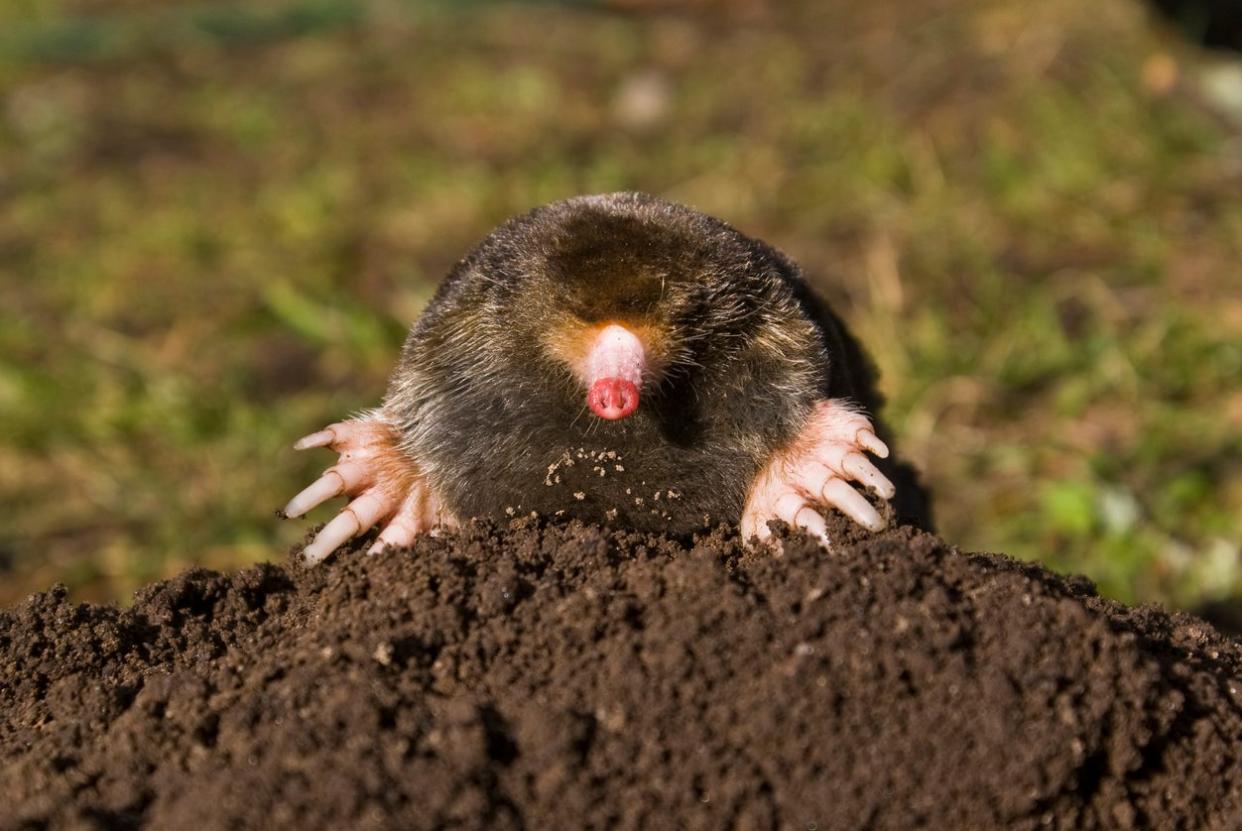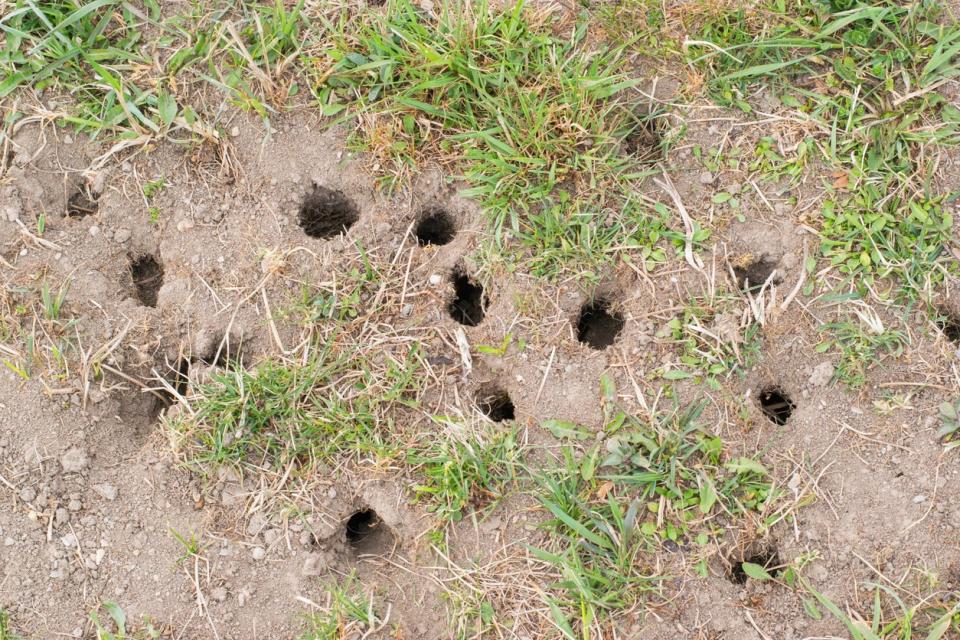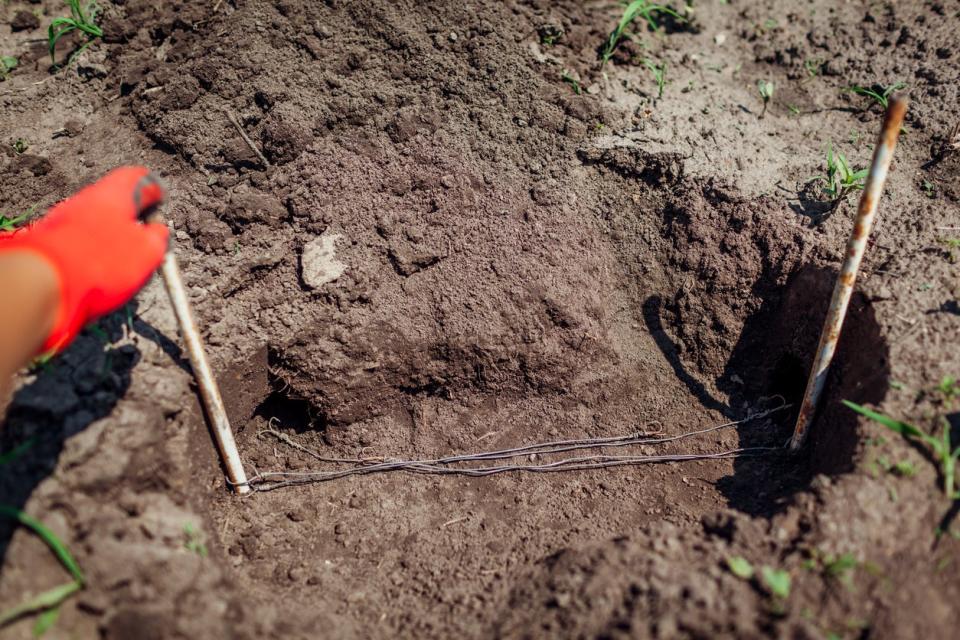Mole vs. Vole Damage—3 Key Differences for Identification (and What to Do About Each Pest)

What You Need to Know
Moles and voles are both nuisance wildlife animals that can do significant damage to lawns and gardens.
Signs of mole damage include raised tunnels throughout the lawn, the presence of molehills, and damaged grass and plant root systems.
Signs of damage from voles include shallow channels in the yard, chewed-up garden plants, and bite marks in tree roots.
Moles and voles are not likely to leave of their own accord. While some DIY methods may be effective, enlisting the help of a wildlife removal service is the safest and most humane way to get rid of these pests.
Whenever there are obvious signs of disturbance in a lawn but it’s unclear what animal is digging holes in the yard, some of the most common culprits are moles and voles. But despite their similar names and habitats, these two creatures cause different types of damage to gardens and landscapes. According to Ty Jones, owner of Deans Services, a Florida-based lawn and pest control business, “Moles and voles are common lawn pests, but their presence and damage are distinct…Recognizing these signs early is crucial for homeowners to prevent extensive damage.”
Understanding the key differences between moles and voles—and the potential damage they can cause—is essential for identifying and addressing the source of these garden woes effectively. Find out the differences between voles vs. moles, how to identify damage from each, and when to get help from one of the best wildlife removal services (such as Critter Control or Trutech).
Mole Characteristics vs. Vole Characteristics
Ground moles are small, burrowing mammals that spend most of their time underground. They have velvety fur, elongated and pointed snouts, and shovel-like front paws for digging. Moles range in length from 4 to 7 inches, and their fur can vary in color from gray to brown.
While moles are often mistaken for rodents, they belong to the insectivore category of mammals and feed primarily on earthworms, insects, and other invertebrates found in the soil. They tend to be the most active in the early morning and late evening during the spring and fall. Though they are rarely seen above ground, obvious signs of moles in a yard are the molehills and tunnels they leave behind as they search for food.
Voles have a very different appearance than moles. Voles are small, rodent-like creatures with stouter bodies. These mammals have a shorter tail; a rounded snout; and small, rounded ears that are often obscured by their fur. Voles typically measure between 5 and 8 inches in length and have dense brown or gray fur.
Voles create intricate systems of surface runways and underground tunnels for food storage and nesting, but they spend most of their time aboveground. These primarily herbivorous critters feed on a variety of plant materials, including stems, roots, seeds, and bulbs.

Photo: istock.com
The Differences Between Mole vs. Vole Damage
The difference between mole and vole damage may not be clear at first glance. Those who are unsure if they’ve spotted mole holes in the yard or lawn damage from voles can observe the damage to narrow down which creature has been scurrying around their property.
1. Moles’ and voles’ diets cause them to create different types of damage. Voles are herbivores that feast on plants, seeds, and tree roots, whereas moles are insectivores that dig for insects.
The dietary preferences of moles and voles significantly influence the type of damage they inflict on gardens and landscapes, leading to distinct patterns that can help in identifying the responsible party.
Moles delve into the soil in search of insects, earthworms, and other invertebrates. Their pursuit of food creates a network of underground tunnels and raises the earth, forming characteristic mounds known as molehills. While moles may involuntarily damage plants in their pursuit of insects, they don’t target them specifically. Voles, on the other hand, eat the roots, stems, and seeds of plants. Vole plant damage can be severe, as these creatures often gnaw at the roots of trees, devour garden vegetables, and chew through bulbs.
2. Voles create networks of shallow channels in the yard, and moles make raised burrows with mounds of soil at each end.
While both are notorious for their landscaping disruptions, voles and moles engage in distinctly different activities that lead to the unique traces they leave behind. Vole damage to lawns often presents as visible trails aboveground. Their networks of shallow, surface-level channels generally weave through grass and mulch, directly linking the vole’s feeding and nesting sites. These runways are about 2 inches wide with discreet entry holes that are about the size of a golf ball.
Unlike voles, “moles are notorious for creating surface tunnels and ridges across your lawn, leaving behind molehills of dirt,” says Jones. “These signs are not just unsightly but can also cause significant damage to plant roots, affecting lawn health.” Unlike vole channels, which stay close to the ground’s surface, mole burrows can reach a depth of 16 to 18 inches. Flattening these burrows is a common method for getting rid of moles, but this typically results in the moles developing new tunnels in a matter of days.
3. Voles reproduce rapidly, and damage to the yard can significantly worsen after new litters are born. Alternatively, mole damage is more consistent as these animals are solitary and have fewer offspring.
According to the Alabama Cooperative Extension System, female voles are capable of carrying five litters a year, each producing as many as six offspring. This high reproductive rate can quickly lead to an increase in the vole population within a specific area, exacerbating the damage to plant roots, bulbs, and grass as more animals vie for the same food resources. As these new litters begin to feed and create their own runways, homeowners may notice a marked escalation in the visibility and severity of the damage.
In contrast, moles, which are solitary creatures by nature, tend to have a more consistent level of yard disruption over time. Moles have fewer offspring in a given year, which limits their population growth relative to that of voles. Consequently, the extent of moles’ damage to lawns tends to remain more stable and predictable, rather than the rapid escalations of damage seen with vole populations.

Photo: istock.com
What to Do About Mole and Vole Damage
As long as they have food and shelter, moles and voles aren’t likely to leave a yard without good reason. Homeowners who are contending with vole or mole damage to their lawn can take the following steps to remove these critters from their property for good.
DIY methods like spraying repellents, removing food sources, and live trapping can be effective ways of minimizing both mole and vole activity.
Professional wildlife removal is the most efficient route to a pest-free lawn, but homeowners may want to try their luck with DIY remedies before paying for wildlife removal costs. There is some overlap in DIY strategies for getting rid of mole and vole populations, but each approach can also be tailored to the specific pest. It’s also possible to have both moles and voles in the yard, in which case it’s a good idea to identify solutions that will solve both problems.
One easy method is to use one of the best mole repellents or best vole repellents, which can be purchased at most garden stores. Eliminating potential food sources may also cause moles and voles to relocate on their own. Moles are especially partial to grubs, so one option is to introduce nematodes, which are parasites that can wipe out a grub population in the yard. Voles prefer to eat tree roots and garden plants, so placing chicken wire around plants can be effective in getting rid of voles.
Finally, live trapping can also be an effective way to capture and relocate both moles and voles. For voles, traps can be placed near active runways. Similarly, the best mole traps are most effective when placed near moles’ tunnel entrances. For either animal, it’s important to refer to local regulations on trapping and check the traps often. Once captured, moles and voles can be released into wooded areas away from the home.
If mole or vole damage persists, a wildlife removal service can take care of the problem safely and humanely.
When DIY methods fail to curb mole or vole activity, or when the extent of the infestation becomes too overwhelming for homeowners to manage on their own, they can enlist the help of a professional wildlife removal service.
“When homeowners notice widespread damage or ineffective results from DIY methods, it’s time to consult a specialist,” says Jones. “Professionals … not only bring decades of experience but also tailor [their] approach to ensure the health of your lawn and the effective removal of these pests.”
Professional wildlife specialists understand the habits and ecological roles of moles and voles, allowing them to choose the most effective, nonlethal methods for capturing and relocating these creatures whenever possible. They can also offer advice on long-term prevention strategies, such as landscape modifications or barriers, to permanently get rid of moles and voles and their damage.
Sources: Natural Green Systems Lawn & Pest, Terminix

